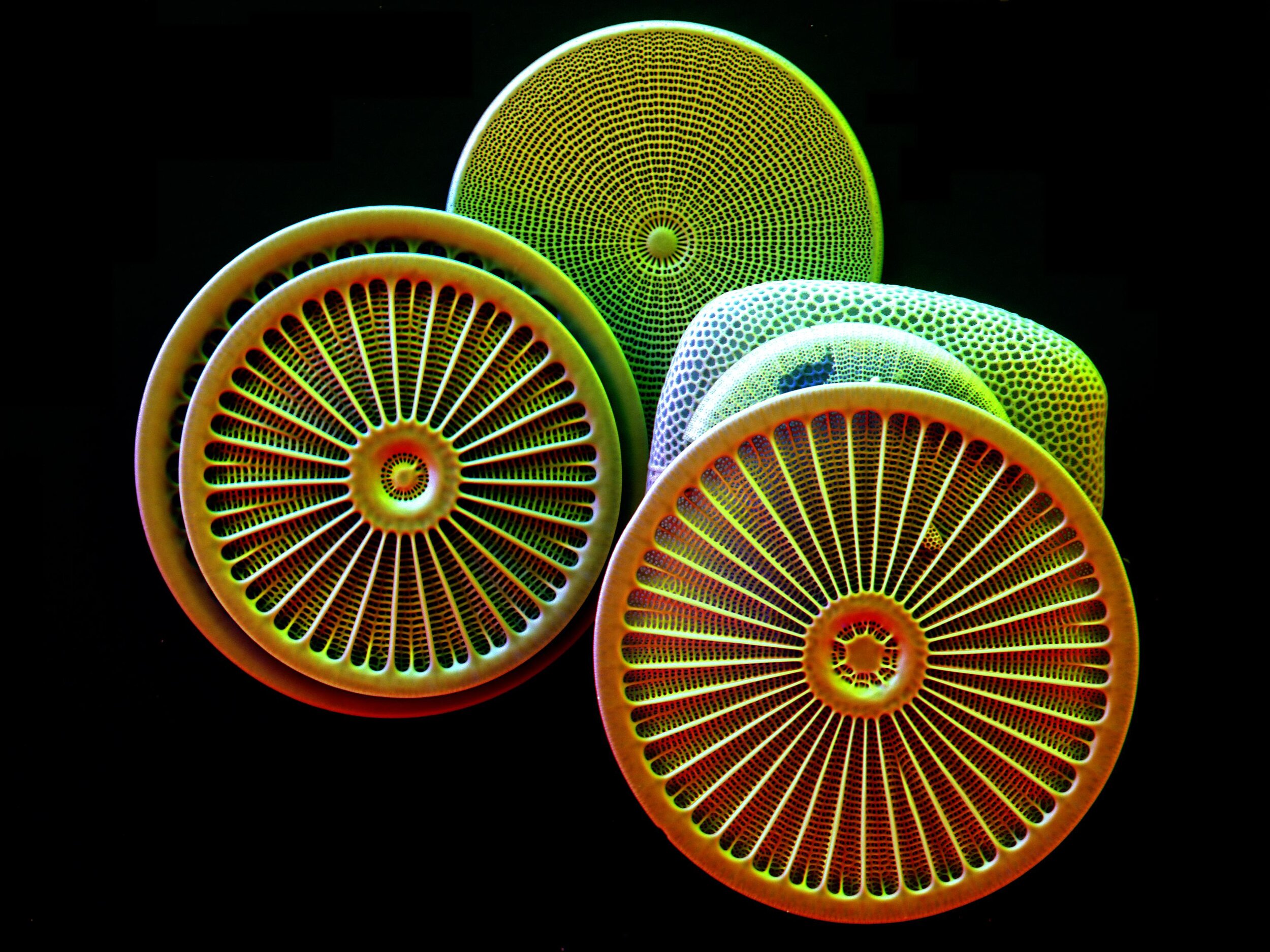Cran Blog
Cranberry, Vaccinium macrocarpon
Cranberry sauce and squash mash by my mom. Stuffing by Aunt Beth, Turkey by Uncle Dan and my cousin Matt.
It’s cranberry season! Cranberry sauce is one of my favorite parts about Thanksgiving. I’ve gotten used to the strange tartness, and the color is incredible. Now I even enjoy raw cranberries. The flavor isn’t for everyone, and in general the cranberry is a mystery to most. Where do they come from? What does a cranberry bush look like? What’s with the water? Cranberries just show up in those rectangular bags in the fall, and you may never have thought of where they come from.
To sow more confusion, there is something out there called a cranberrybush viburnum, or highbush cranberry (Viburnum trilobum). Viburnum trilobum has red fruits, but they are NOT cranberries. This plant is named for its red fruits that resemble cranberries, but it is an imposter! Nothing against Viburnum trilobum, but real cranberries are completely different. Cranberries grow on tiny trailing vines on the ground. Cranberry vines can be a few centimeters long up to 2 meters long, but never get more than a few centimeters off the ground. The leaves are small and oval, usually about one cm long. The plant is perennial with woody vines, and the leaves are evergreen, persisting for 2-3 years. The cranberry plant looks a bit like thyme. The cranberry fruits are comically huge in comparison to the vines. How could a spindly little plant produce a fruit that big?
While cranberries do grow in wet soil, they don’t grow in open water. The image we have of cranberries floating on water comes from the harvest process. The modern cranberry harvest technique involves flooding the growing area. The farmer floods the field, agitates the water to detach the fruits from the vines, then the fruits float to the surface where they can be easily gathered. The fruits are hollow, so they are buoyant. Cranberries can be grown in flat fields, but they tend to be grown in low, diked areas so that they can be flooded in the fall. The flooding is just an agricultural technique, and not part of the natural growing conditions for cranberries.
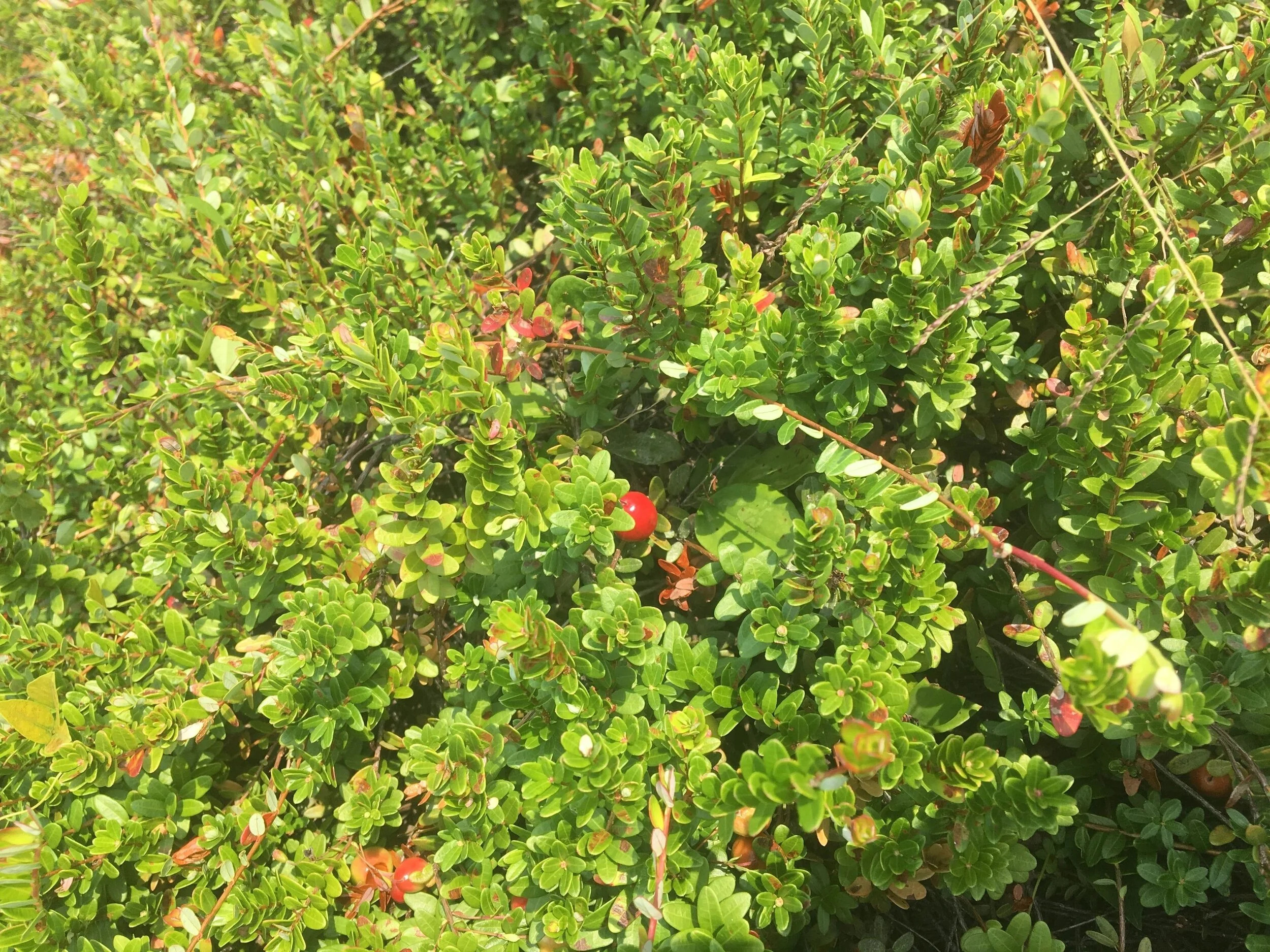
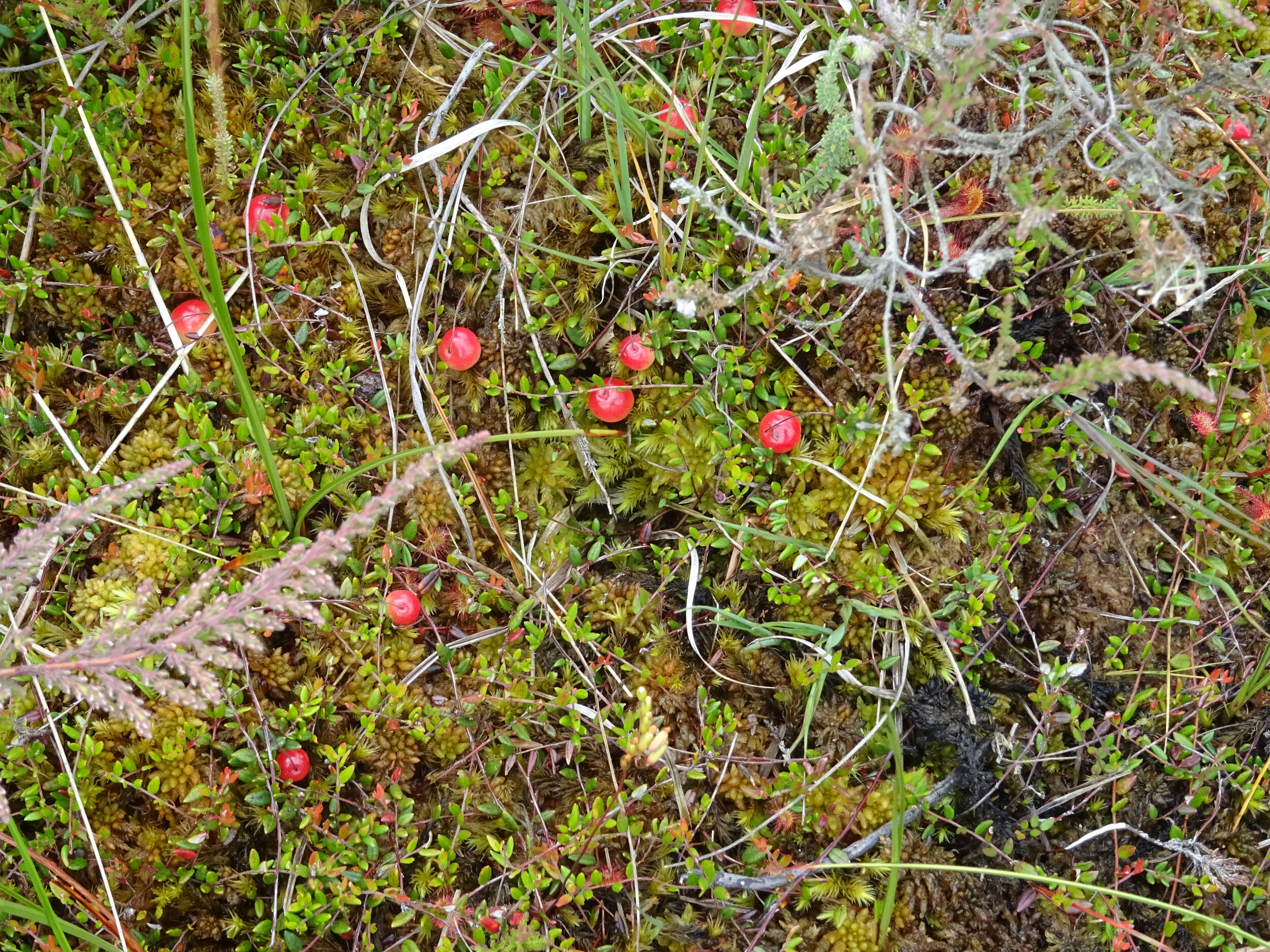
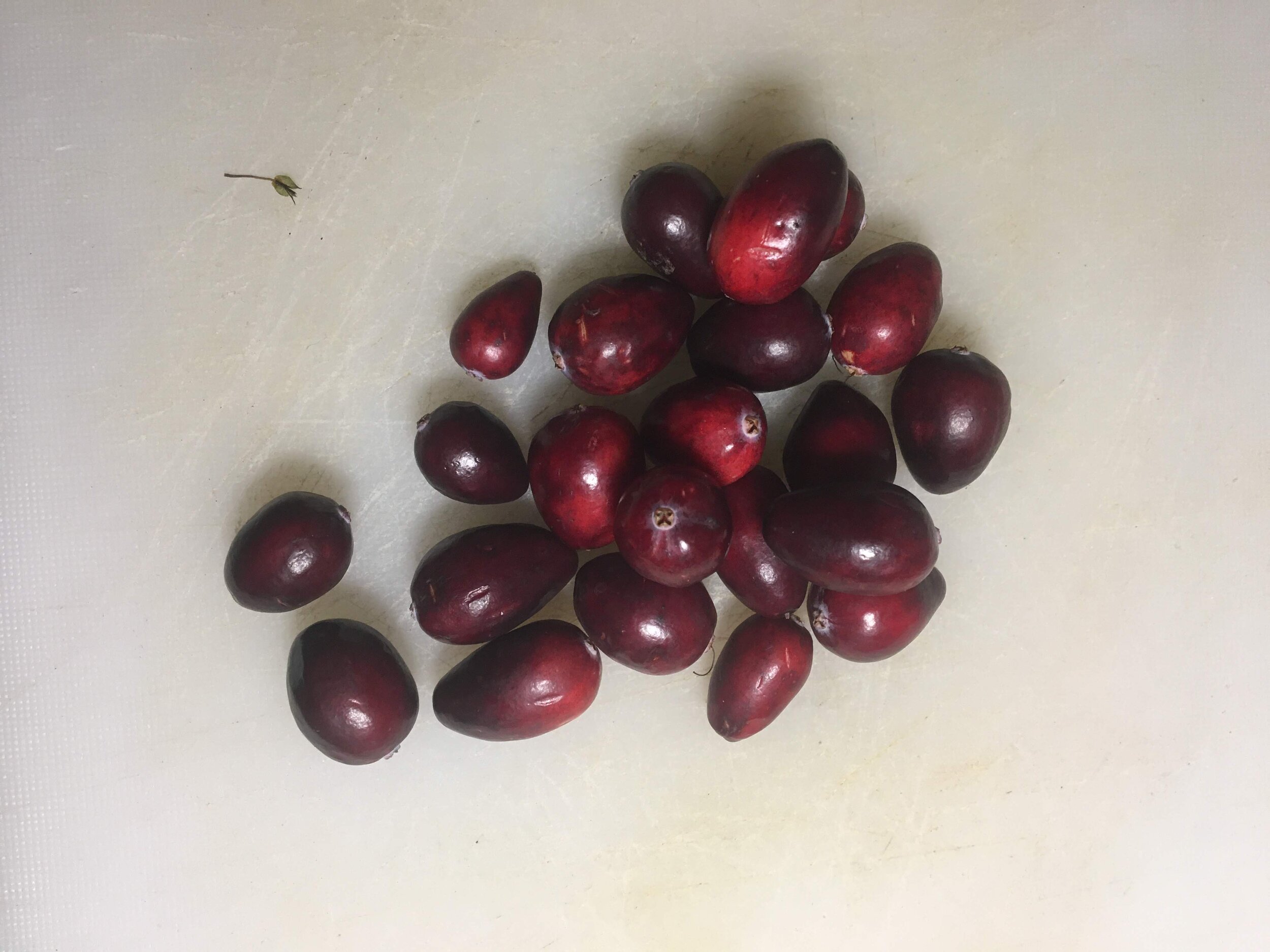

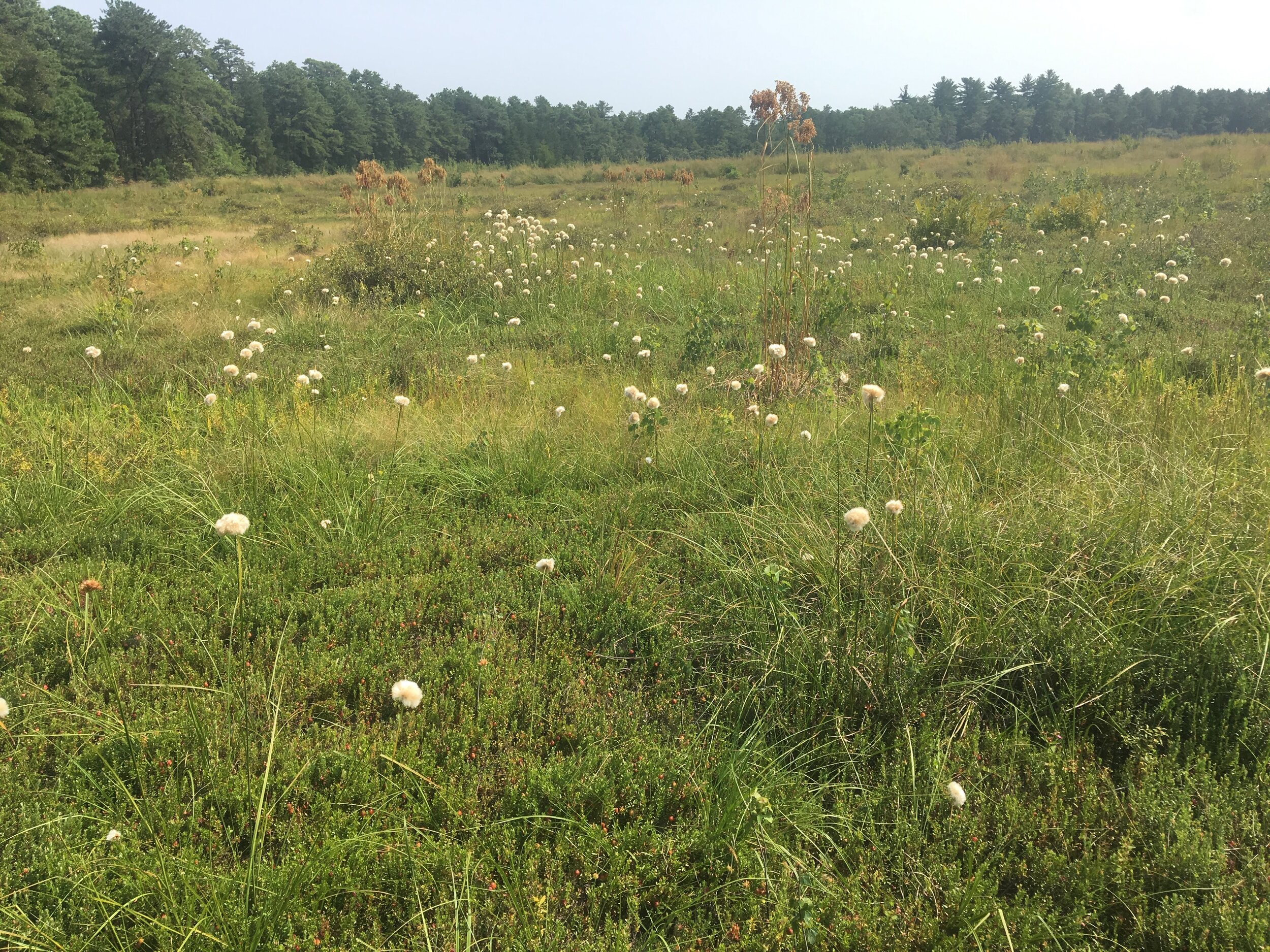
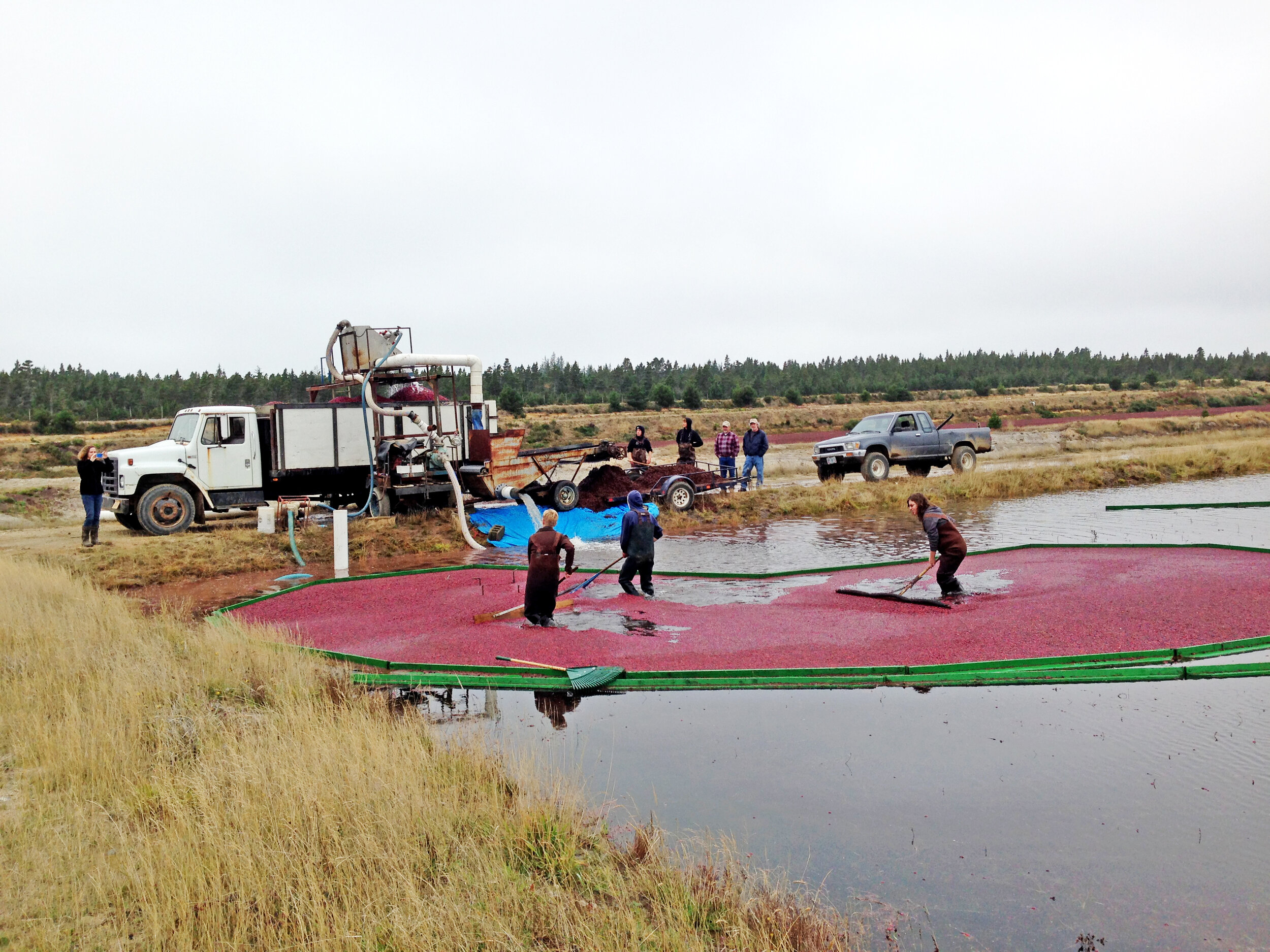
Bog ecosystem
Though cranberries don’t grow in open water, they do thrive in wet areas. Cranberries are native to North America where they grow in wet fields and meadows, streambanks, and bogs. Bogs are wetlands that are consistently wet and have acid soils and low nutrient levels. Cranberries tolerate some flooding and soils with pH of 4 to 5.5, so bogs are perfect for them. Saturated soils slow the rate of decay, so plant material builds up over time and forms a deep layer of partially decomposed plant material in bogs, known as peat. Yes, it’s that peat, the same one that you use in your garden. These conditions are quite stressful for plants and have led to a group of plants that are specially adapted for wet, acidic, low-nutrient conditions. Among these are sphagnum moss (of peat moss fame), and carnivorous plants, such as Venus flytraps and pitcher plants. Another group of bog plants are the Ericaceae, or Heath family. This includes cranberries, blueberries, huckleberries, azaleas, rhododendrons, mountain laurel, wintergreen, and many others.
Pine barrens ecosystem
Some crans from my local grocery store.
Cranberries are common in New Jersey and grow both naturally and in cultivation in the coastal plain ecosystem known as the pine barrens. The pine barrens ecosystem covers most of southern New Jersey (FWS Pinelands facts). The pine barrens have sandy, acidic soils with low nutrient levels that support a unique set of plants and animals. The sandy soils come from the time over five million years ago when the region was covered by ocean (NJDEP Geology). Sandy soils tend to drain quickly due to the large pore space between the grains. As a result, the soils are dry, and nutrients leach away quickly. The water and soils in this region are acidic with a pH of 5 or less. This environment is conducive to frequent fires, so a fire-adapted Pine forest covers much of the region, giving it the name.
Another feature of the New Jersey pine barrens is a high water table. The water table is at or near the surface for part of the year, creating large wetland areas. These wet, acidic areas are perfect cranberry habitat. That’s why New Jersey is one of the top cranberry-producing states along with Wisconsin, Oregon, and Massachusetts.
The illustration below shows the boundaries of the “ecological” Pine Barrens in orange and purple and the “legal” boundaries of the protected Pinelands in green. https://pinelandsalliance.org/learn-about-the-pinelands/ecosystem/pine-barrens-vs-pinelands/
The Pinelands and plant-centric policy
The pine barrens are home to an amazing diversity of plants and animals, many found only in the this ecosystem. The area overlies a large freshwater aquifer that is designated as an “outstanding natural resource water”. Because of the unique habitat and valuable natural resources, much of the pine barrens of New Jersey have been protected in a National Reserve called the Pinelands. The Pinelands National Reserve is about 1.1 million acres (NJDEP Pinelands Reserve Information). The reserve has a mosaic of different land uses, including a core conservation area and rural development areas.
The Pinelands Reserve has unique policy that is specific to plants. Traditional agriculture is not allowed in many parts of the Pinelands Reserve, but there is a Special Agricultural Production Area (Pinelands Alliance Map). The 40,300 acre Special Agricultural Production area is reserved for berry production and horticulture of plants native to the pine barrens. Native plants don’t get to be the focus of much policy, so it feels very special that even agriculture is dedicated to native plants inside the Pinelands Reserve. Blueberries and cranberries are the primary crops grown there.
Of our North American native fruits, only cranberries, blueberries, and concord grape are grown commercially. Eating native food lends a whole different perspective to the idea of eating locally. Eating any locally-produced foods may have many benefits, but imagine if we were eating locally-produced native species? In New Jersey, cranberry agriculture allows people to make a living while working with local ecosystems. Cranberries connect us to the ecology of the region while nourishing us and brightening holiday tables.
What foods are native to your area?



